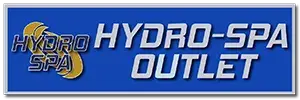In undertaking DIY hot tub repairs, particularly the replacement of jets, filters, and heaters, precise knowledge and adherence to technical guidelines are imperative. For instance, the process of replacing jets necessitates the correct identification of jet types—whether they are adjustable, rotational, or directional—and understanding the locking mechanisms used in your specific hot tub model. Similarly, when addressing filter replacement, one must consider the filter’s compatibility with the pump’s flow rate and ensure that the sealing O-rings are properly lubricated to prevent leaks. Replacing heaters requires a careful examination of electrical connections and adherence to safety standards to prevent hazards. Each step, if executed with precision, not only restores functionality but also prevents further damage, underscoring the importance of a methodical approach in DIY hot tub maintenance. Curiously, one might wonder how these replacements impact the overall energy efficiency and operational costs of the hot tub.
Identifying Worn Hot Tub Components
In hot tub maintenance, accurately identifying worn components is crucial for ensuring optimal functionality and longevity. Recognizing the signs of deterioration in jets, filters, and heaters is fundamental.
Jets may exhibit reduced water pressure or erratic spray patterns, indicating blockages or wear. Filters, crucial for water clarity and sanitation, should be examined for debris accumulation and fiber degradation, which compromise filtration efficacy.
Heaters, responsible for maintaining the desired water temperature, often fail due to scale buildup or electrical issues, evidenced by fluctuating temperatures or failure to heat. Mastering these diagnostic skills not only preserves the integrity of your hot tub but also fosters a sense of community among enthusiasts committed to meticulous upkeep.
Step-by-Step Replacement Procedures
Having established the importance of recognizing when hot tub components such as jets, filters, and heaters need replacement, it is imperative to understand the correct procedures to replace these elements effectively.
Begin by isolating the power supply to ensure safety.
For jet replacement, unscrew the old jet from the socket and carefully install the new jet, verifying it locks securely into place.
When replacing filters, eject the old filter, cleanse the housing with a non-abrasive cleaner, and insert the new filter, ensuring it fits snugly.
For heater replacement, disconnect the old wiring and remove the heating unit. Install the new heater, reattach the wiring, and ensure all connections are tight and corrosion-free.
This meticulous approach guarantees longevity and optimal performance of your hot tub.
Testing and Maintenance Post-Repair
Once you have completed the replacement of jets, filters, and heaters in your hot tub, it is crucial to conduct thorough testing and commence regular maintenance to ensure the system operates efficiently.
Begin by verifying the electrical connections and ensuring all components are secured and sealed properly. Initiate the system and observe the operational flow for any irregularities. Check for leaks, unusual noises, or fluctuations in water temperature. Adjust the settings of your new heaters and regulate the jet speeds to optimize performance.
Establish a weekly maintenance schedule that includes checking pH levels, sanitizing the water, and cleaning or replacing filters as needed to maintain water clarity and hygiene. This proactive approach will extend the lifespan of your repairs and enhance your hot tub experience.
In conclusion, diligent execution of hot tub repair, including component replacement such as jets, filters, and heaters, is imperative for maintaining operational efficiency. Adhering to systematic procedures for identification, replacement, and subsequent testing ensures the longevity and reliability of the equipment. Continuous maintenance post-repair mitigates future malfunctions, thereby safeguarding the investment in the hot tub. This proactive approach in equipment management significantly enhances performance, ensuring a seamless and enjoyable user experience.
Read more:
Hot Tub Repair and Replacement Parts: What to Buy and Where to Find Them
